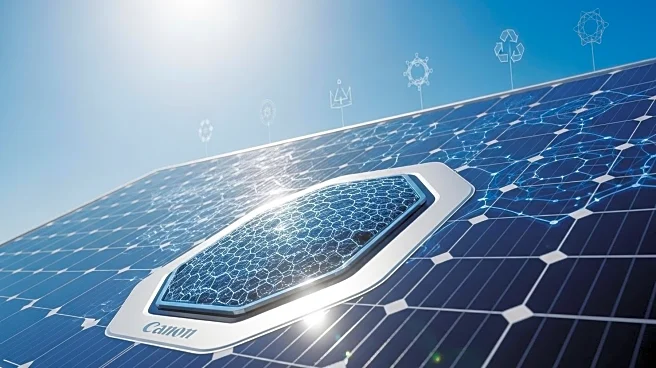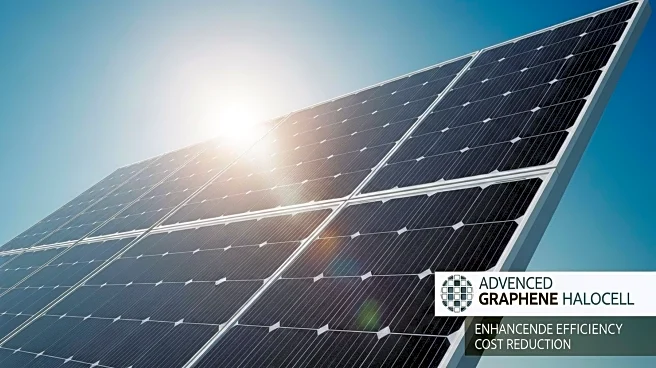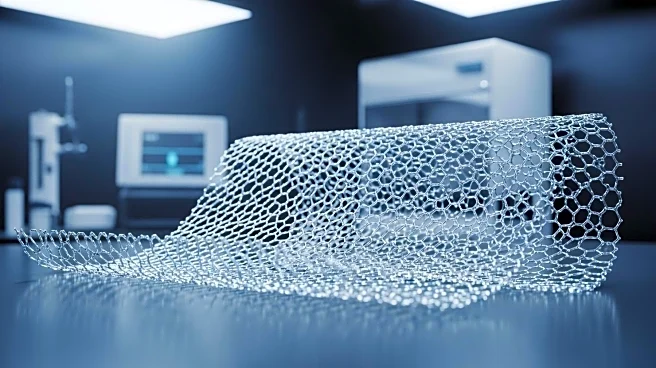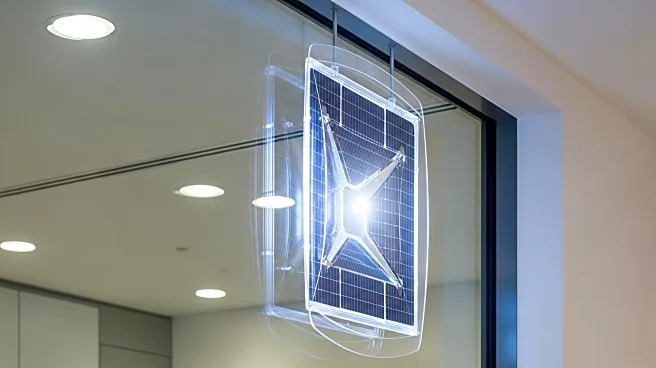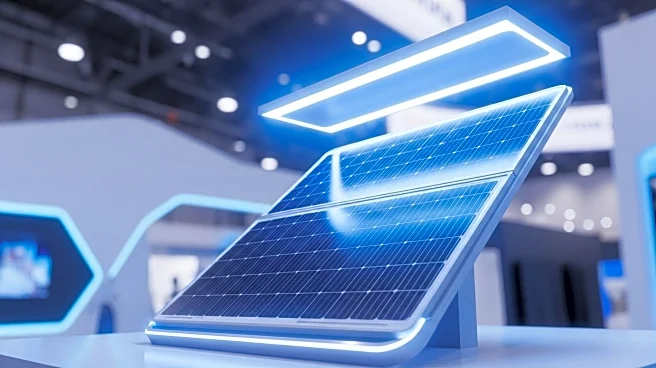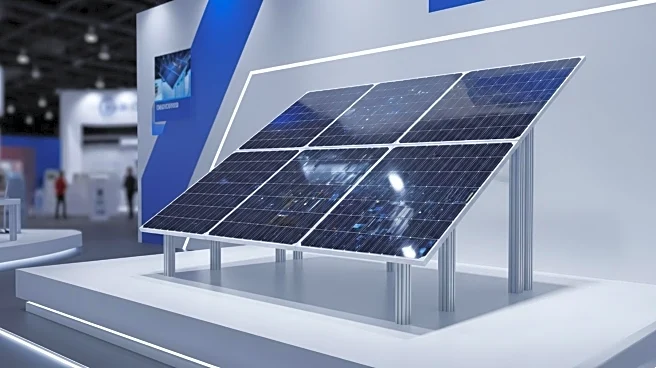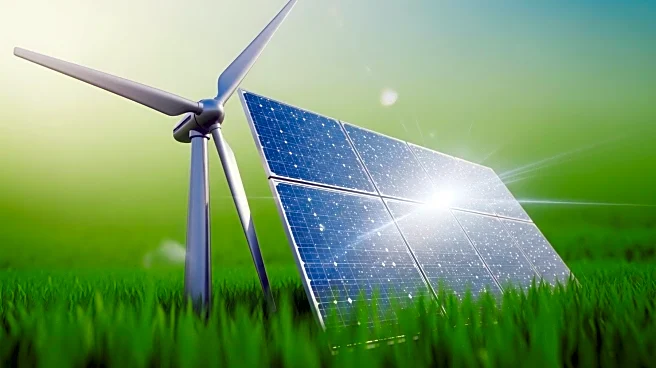What's Happening?
First Graphene Limited has partnered with Halocell Energy and Queensland University of Technology to develop graphene-enhanced perovskite solar cells (PSC). The addition of graphene has doubled the efficiency of these solar cells to 30.6% and reduced production costs by up to 80%. This improvement is achieved through the compatibility of graphene with roll-to-roll dispersion technology, which eliminates the need for expensive materials like gold and silver. The partnership, funded by a three-year AU$2.03 million grant from the Federal Government's Cooperative Research Centres Projects, aims to scale up production and increase competitiveness in the market. Halocell has been selling these solar cells in Australia since late 2024, targeting small electronic devices and high-end applications like satellite solar modules and drones.
Why It's Important?
The development of graphene-enhanced PSCs represents a significant advancement in solar technology, offering a cost-effective and efficient alternative to traditional silicon-based solar cells. This innovation could lead to widespread adoption in various industries, reducing reliance on batteries and promoting sustainable energy solutions. The partnership between First Graphene and Halocell not only strengthens sovereign manufacturing capabilities in Australia but also positions these companies as leaders in the global solar market. The reduced production costs and increased efficiency could drive significant growth in the solar industry, benefiting both consumers and manufacturers.
What's Next?
Halocell plans to expand its production capacity at its Wagga Wagga plant, aiming to manufacture up to 60 million PSC units annually. This expansion will involve modular growth of roll-to-roll production lines and enhanced operating capabilities. The ongoing collaboration with First Graphene will continue to focus on improving product performance and exploring new applications for PSC technology. As the market for solar cells grows, Halocell and First Graphene are likely to explore further commercial opportunities and partnerships to capitalize on the increasing demand for sustainable energy solutions.
Beyond the Headlines
The use of graphene in solar cells highlights the potential for advanced materials to transform energy production and consumption. This development could lead to broader applications of graphene in other industries, such as electronics and aerospace, where efficiency and cost-effectiveness are crucial. The environmental benefits of reducing battery usage and promoting renewable energy sources align with global efforts to combat climate change and reduce carbon emissions.
